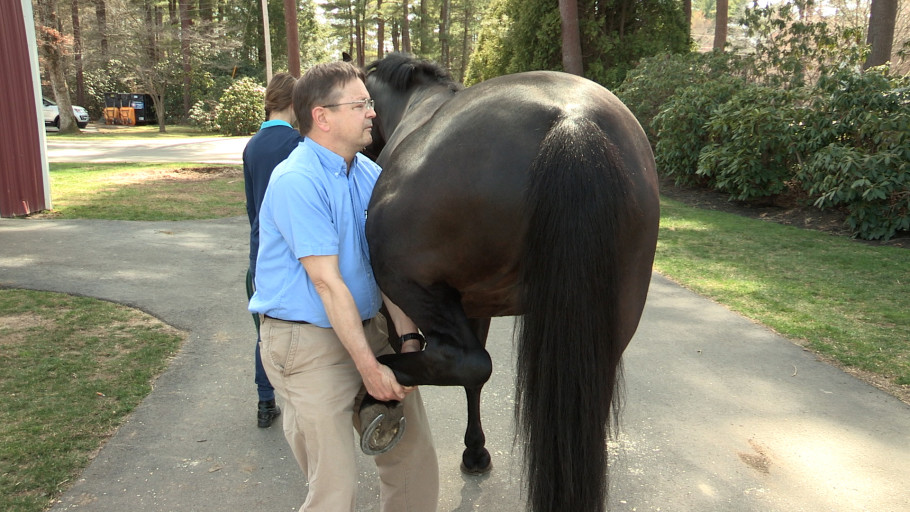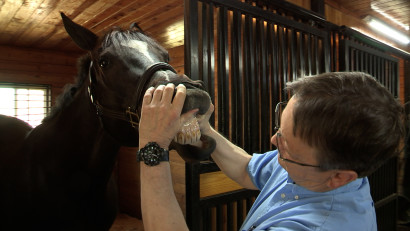Pre-Purchase Exams for Horse Buyers and Sellers
Updated September 18, 2023
What are Pre-Purchase Exams for Horses?

A pre-purchase examination (PPE) is a “snapshot” of the horse’s health and soundness. It can range from a standard physical examination to a comprehensive inspection, including a full musculoskeletal workup complete with diagnostic imaging.
There is no “one size fits all.” What the buyer intends to do with the horse and the selling price determines the level of scrutiny – and, therefore, the cost – of a pre-purchase exam.
The workup for a “husband horse” whose job is to be a pasture ornament during the week and go on a one-hour trail ride on weekends will be much less extensive than a horse being imported from Europe to take a professional to the FEI levels of dressage, jumping, or eventing.
Therefore the examining veterinarian and the buyer must clearly understand the goals and expectations of the pre-purchase. The seller also needs to be part of the conversation because, as the current owner, they are responsible for sharing the history of the horse, both from a training aspect and a health perspective.
Video Overview on Components and Purpose of Horse Pre Purchase Exams
Essential Components of Pre-Purchase Exams

Almost all pre-purchase exams will include the following:
- A general physical examination, which is a head-to-toe evaluation of the body and its functions using visual inspection, palpation (feeling with the hands), and auscultation (listening).
- Most vets look at the horse’s conformation, hooves and shoeing, and overall presence and attitude.
- The vital signs (temperature, heart rate, respiratory rate) are taken, and the vet may choose to listen to the heart, lungs, and gut sounds at this time.
- Moving to the front of the horse, the eyes, ears, nose, and mouth are assessed.
- The exam continues down the horse’s neck, back, and hindquarters, looking at the skin and palpating the muscles, bones, joints, tendons and ligaments, and other tissues.
In most cases, the horse will be walked and jogged in hand or lunged to check for soundness. The basic PPE may conclude here. A more thorough and intensive exam may be needed when the horse is of a higher value or will be used for more intensive competition or riding.
Additional Components of Pre-Purchase Exams

A more comprehensive musculoskeletal exam may be performed. During this comprehensive exam, the horse is jogged before and after flexion tests of the different front and hind limb joints. Diagnostic imaging such as radiography (x-rays), ultrasonography, nuclear scintigraphy (bone scan), and computed tomography (CT) may also be taken for a thorough PPE.
The horse will also be evaluated under saddle. A reproductive exam is also recommended if the horse is intended for breeding.
Blood Tests
Blood tests can be completed on a more thorough PPE to determine the following:
- Overall well-being, as well as the health of specific organs like the liver and kidneys;
- Test for specific diseases like Equine Infectious Anemia; or to
- Determine if masking agents such as painkillers or tranquilizers are present.
Video on the Steps of a Pre Purchase Exam
Takeaways for Horse Buyers and Sellers
Remember, there is no pass or fail regarding the PPE. You simply discuss any issues or problems documented with the vet and decide if you are willing to accept them. For example, a blemish like a cold set splint probably isn’t important to someone looking for a safe, older horse to learn to drive. However, someone shopping for a confirmation hunter may walk away from the deal.
Also, remember the pre-purchase exam is not insurance against a health condition or lameness developing in the future.